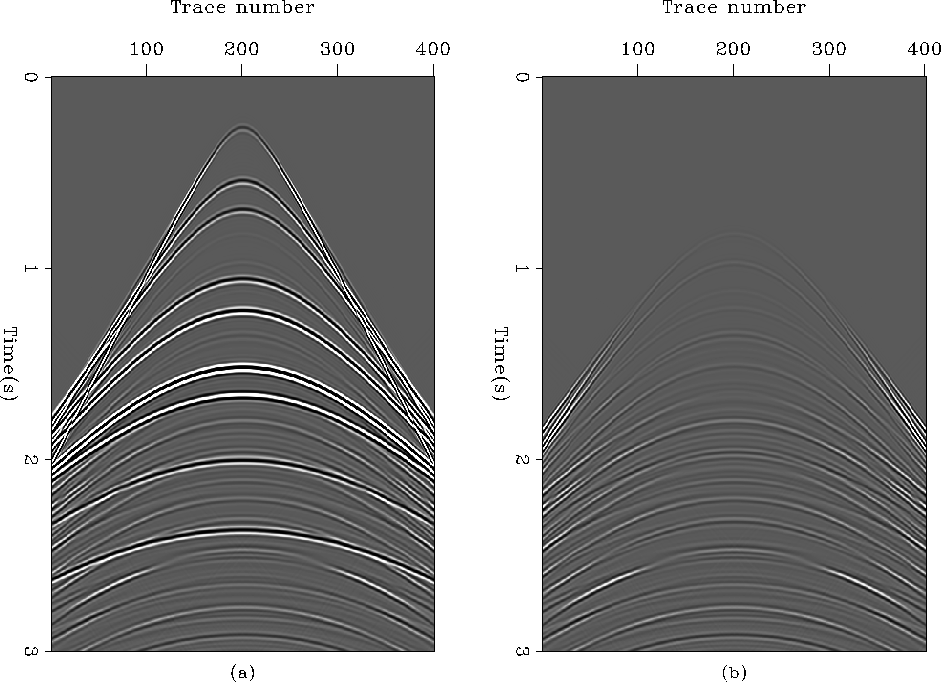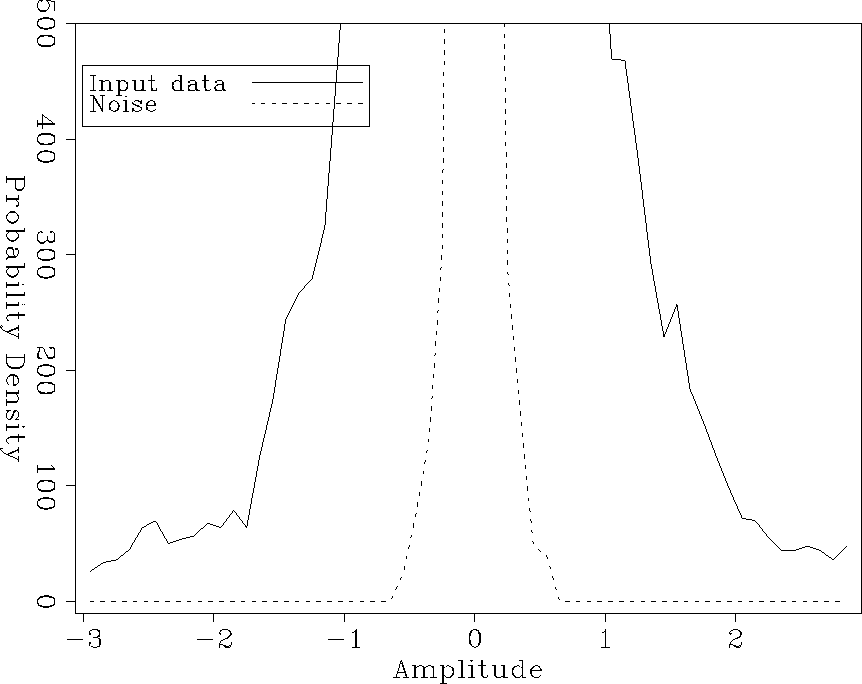 |
Figure 6 (a) A synthetic shot gather infested with internal multiples. (b) The internal multiples model obtained using the CFP technology. This model matches the internal multiples in (a).
 |
|
histodata
Figure 7 Histograms of the input data (Figure 6a) and of the noise (Figure 6b). The density function of the noise is much narrower than for the data. The |  |